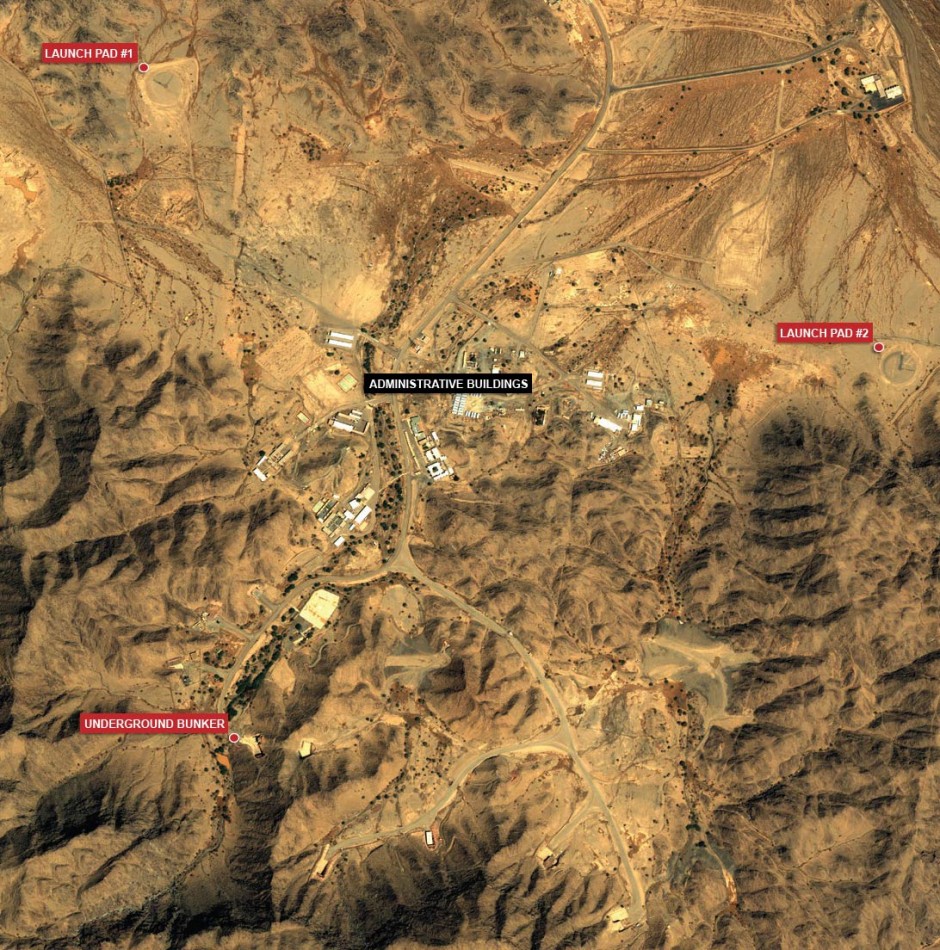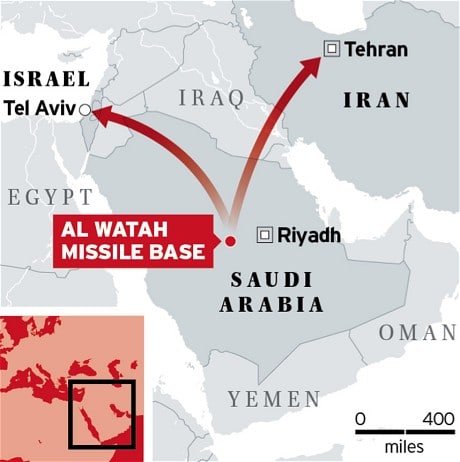"الرياض" أصبحت هدفاً صعباً للاستخبارات العالمية بعد تمريرها لـ"صفقة الثمانينيات" مع الصين
"هدية الصواريخ الثلاثة" تربك المحللين وتثير أسئلتهم: هل طورت المملكة "رياح الشرق"؟
 محمد الطاير- سبق:
محمد الطاير- سبق: لم تمر صورة نشرتها وكالة الأنباء السعودية (واس) في العشرين من مايو الماضي
مرور الكرام، حيث رأى محللون مختصون بشؤون الدفاع أنها قد تشير إلى أن هناك تغيراً قد طرأ على
ترسانة الصواريخ الإستراتيجية التي تملكها المملكة، وأن "الرياض" ربما كانت تعمل في صمت خلال
الأعوام الماضية لبناء ترسانة من صواريخ الردع، وتمكنت بالفعل من تعزيز قدرتها في ذلك المجال، وأصبحت
تملك صواريخ باليستية جديدة أضافتها لمجموعتها المكونة من عشرات الصواريخ الصينية المعروفة بـ"رياح
الشرق"، كانت قد اشترتها في الثمانينيات الميلادية.
صورة "واس" التي أثارت المراقبين يظهر فيها سمو نائب وزير الدفاع الأمير فهد بن عبدالله وهو يتسلم هدية
تذكارية عبارة عن مجسمات لثلاثة صواريخ مختلفة خلال زيارته لقوة الصواريخ الإستراتيجية في مايو
الماضي، وهو ما دعا المختصين للتساؤل عن إذا ما كانت المملكة تملك نوعاً واحداً من الصواريخ
الباليستية، وهي "رياح الشرق" الصينية (DF-3)، فلماذا يوجد بالمجسم الذي استلمه الأمير فهد بن عبدالله
من ضباط "قوة الصواريخ الإستراتيجية" ثلاثة صواريخ مختلفة؟
وتفاعلت مواقع إعلامية ومنتديات متخصصة في الشؤون الدفاعية مع الصورة، وزادت حدة الجدل الأسبوع
قبل الماضي عندما نشرت مجموعة "آي إتش إس جاينز إنتلجنس" البريطانية، التي تضم مستشارين
متخصصين في شؤون الدفاع، صوراً لقاعدة صواريخ سعودية التقطت بواسطة الأقمار الصناعية، وأظهرت
منصات لإطلاق صواريخ، مع علامات تشير إلى أهداف إيرانية محتملة ومواقع أخرى في إسرائيل.
كما دفعت صورة "الهدية التذكارية" التي تسلمها الأمير فهد بن عبدالله مختصين في شؤون الدفاع، ومنهم
شون أوكونور، الذي عمل في سلاح الجو الأمريكي لعشر سنوات كمحلل استخباري، لأن يلمح إلى أن
السعودية ربما أرادت من نشر تلك الصورة أن تبعث برسالة واضحة تقول فيها: لدينا صواريخ إستراتيجية
جديدة.
ووضع أوكونور، في تقرير موسع يحمل العنوان: "الكشف عن مواقع لصواريخ باليستية سعودية" ونشرته
الأسبوع الماضي مجلة "جينز إنتلجنس ريفيو" اللندنية المتخصصة في المسائل الدفاعية، قائمة ببعض
الصواريخ التي من الممكن أن تكون السعودية قد اشترتها، ملمحاً إلى أن الرياض قد تسعى لشراء طراز
أحدث من صواريخ رياح الشرق (DF-3) التي تعمل بالوقود السائل، وهي صواريخ (DF-21) التي تعمل
بالوقود الصلب، وتملك نظام توجيه حديث، فيما رأى محللون آخرون أن السعودية ربما أضافت
لترسانتها صواريخ باكستانية من طراز "غوري" أو "شاهين" متوسطة المدى.
ويصل مدى الصاروخ "غوري 2" إلى 2200 كم، فيما يصل مدى "شاهين 3" إلى 4500 كم، والاثنان يعملان
بـ"نظام الملاحة بالقصور الذاتي".
ومنذ بدايات العام 2000 سرت العديد من الشائعات بأن السعودية تعمل من أجل تطوير "رياح الشرق"، غير
أن استخبارات عالمية ومنظمات مختصة لم تستطع إثبات ذلك، وأصبحت الرياض، بحسب مراقبين، هدفاً
صعباً للمراقبة، خاصة عندما يتعلق الأمر بصفقات الصواريخ، فقد نجحت بالثمانينيات في أن تشتري نحو 60
صاروخاً من الصين (رياح الشرق) دون أن يعلم أحد.

المصدر /
ط³ط¨ظ‚ | "ظ‡ط¯ظٹط© ط§ظ„طµظˆط§ط±ظٹط® ط§ظ„ط«ظ„ط§ط«ط©" طھط±ط¨ظƒ ط§ظ„ظ…طdefense-arab.comظ„ظ„ظٹظ† ظˆطھط«ظٹط± ط£ط³ط¦ظ„طھظ‡ظ…: ظ‡ظ„ ط·ظˆط±طھ ط§ظ„ظ…ظ…ظ„ظƒط© "ط±ظٹط§طdefense-arab.com ط§ظ„ط´ط±ظ‚"طں




